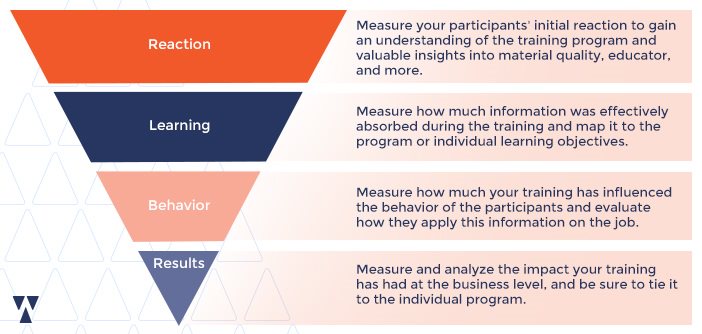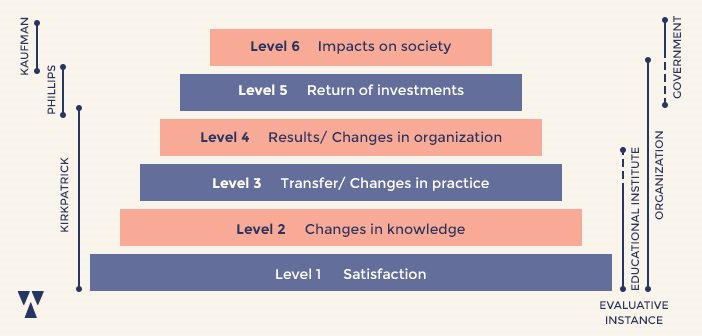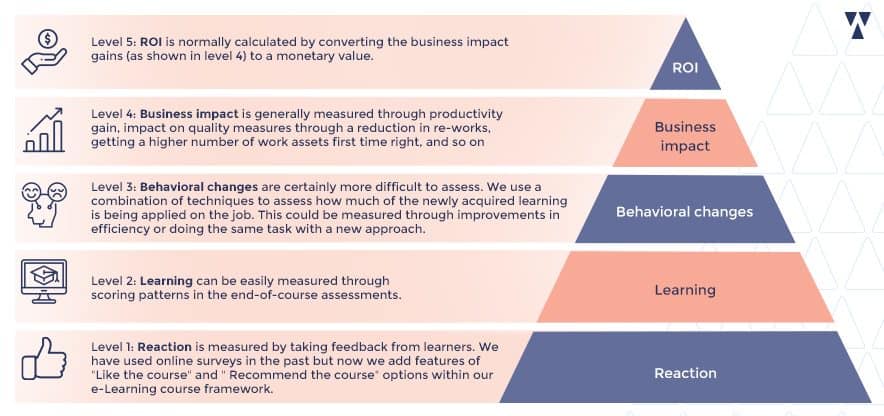As an L&D division, you must be spending significant time and money in training employees, customers, partners. Especially this pandemic has forced us to focus more on imparting most of the training online and hence doing training evaluation for measuring the effectiveness has become the need of the hour.
If you are an L&D professional or a training manager this article will help you to understand why training evaluation is important, why it fails, and various methods which you can choose for your training evaluation.
"Evaluation is not an afterthought to training, but rather is meant to be integrated into the entire learning and development process." -James D. Kirkpatrick
Why Training Evaluation Fails
Willingness to Do Training Evaluation
To evaluate any training it is important to choose the right evaluation methodology for your training program. In a free-thinking, self-paced learning world, you might think that evaluation could build pressure or forcing learners into learning will reduce learner’s interest, etc. However, training without evaluation wouldn’t really be effective and willingness is the first step to implement training evaluation in place.
Deciding on the Right Approach for Training Evaluation
To set up the training evaluation framework, choosing the right path to achieve the appropriate results is a must. Many times, if it is not thought in the beginning then setting up this evaluation framework may appear complex than it actually is. Hence choosing the right approach in consultation with all the respective stakeholders is an important step.
Lack of Planning and Poor Timing
In this fast-paced world, there are likely chances that many times chances are you as an L&D may not get enough time to plan your training evaluation process and strategically executing it. This is one of the main reasons which push this process on back-seat and business priorities takes the charge. Hence a well-thought advance planning can reduce this challenge.
Let’s Do It After Training
Another aspect that often hinders evaluation is the fact that training managers and L&D often think of it as an afterthought rather than thinking of it as a part of the learning development itself. Hence, the evaluative model often fails to measure the actual results. It is always advisable that the training evaluations are thought from the beginning itself.
Importance of Training Evaluation
Gathering Information
The success of any training (eLearning, Classroom, or VILT) remains in the way it is improved or modified from time to time. But how is that done? Where do we begin from? these are some of the important questions. Training evaluation is a way to collect such raw information, feedbacks, how the learners access learning, how they progress, where do they drop out, and much more important information like these. This helps in understanding what needs to be replicated, what needs to be modified, and what needs to be improved in a particular training program.
Getting Concrete Answers
ROI is the answer to all investment battles. Why should we opt for eLearning? How will the training help? What further improvements are required? What needs to be changed? What learner is gaining? Good evaluation gives the answers for all such questions and many more. This data can be used to convince the key stakeholders and in negotiating the training budget too.
Analyzing Training Efficiency
While this may very well be the primary role of training evaluation and assessments. Reports often provide the bigger picture when analyzed. Even the learning patterns can be predicted with enough data and this, in turn, can assist in creating more intuitive training, and for delivering personalized learning. Training data analyzed properly can help to draw many business conclusions for the future.
Benefits of Training Evaluation
Accountability
A successful training evaluation works as a checkpoint to ensure and measure the effectiveness of training. A well-laid-out training evaluation process helps to bring greater accountability by ensuring the end objectives of training met and there are no compromises on deliverables from either side.
Enhance Credibility
The historical data of any training evaluation can help to gain the credibility of the training program to future participants. Since the data can explain the effectiveness of a particular training program and how it helped participants to enhance productivity, this helps to build the credibility of the training program.
Feedback Transparency
Feedback is one of the most important steps in the overall training evaluation. Done correctly it helps to understand the gaps to be filled in the training and also can act as a guide to the amendments required in implementing the training.
Boosts Training Effectiveness
The right training evaluation process ensures that it enhances the training effectiveness by bridging the gaps in the program and ensuring the overall quality of the training program is maintained at all levels. The evaluation process also helps to bring standardization to the learning strategy.
Popular Models For Training Evaluation
The Kirkpatrick Taxonomy Model
Kirkpatrick Taxonomy is one of the most widely used methods for evaluating the effectiveness of corporate training programs. This a detailed framework categorized into four-level and helps to measure and evaluate the effectiveness of the training program.
Below Infographic explains the four levels-
Kaufman's Five Levels of Evaluation
Kaufman’s model developed by Roger Kaufman and John M. Keller is one of a number of learning evaluation models that build on the Kirkpatrick Model. Kaufman’s Five Levels of Evaluation is a response, or reaction to, Kirkpatrick’s model and aims to improve upon it in various ways. The below infographic explains the Model.
The Philips ROI Model
The Philips ROI Model is based on top of Kirkpatrick model and includes Returns on Investment (ROI) This model was rolled out in the early 2000s and has level 5 evaluation, compares the program's overall cost to its monetary benefits. This is presented as a cost/benefit ratio. A key component to evaluating at this level is isolating the training benefits and eliminating any non-training factors that may have contributed to the organizational impact.
In short training, evaluation is all about finding how effective the training is or it was. It helps in understanding whether the objectives have been reached, what skills or behavior changes have been imparted, how the performance has improved, and most importantly how it affects the organizational goals, turn-around, and in gaining a competitive edge.
We would love to hear your training evaluation process and what measure you take to ensure this is a religiously followed process at your end. Do drop your suggestion in below comment box.
Originally Published on May 4, 2018








